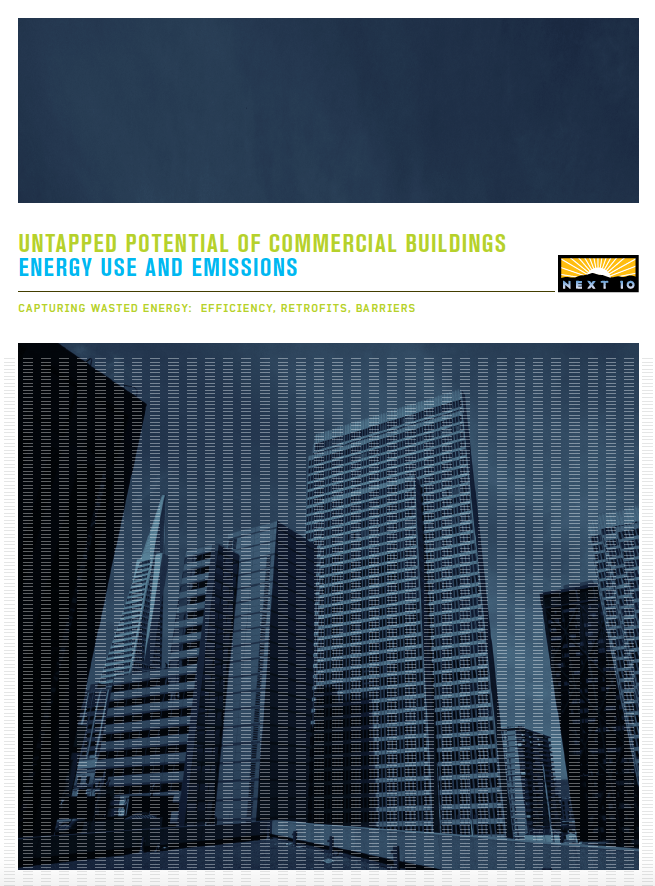Publications
Untapped Potential Of Commercial Buildings: Energy Use and Emissions
New Next 10 study identifies commercial buildings as a stealth energy drain and a huge untapped resource that could provide significant savings for California businesses and state government, reduce the need to build new power plants, and cut global warming pollution while generating jobs and economic growth.
The report, Untapped Potential Of Commercial Buildings: Energy Use and Emissions, produced by Collaborative Economics for Next 10, examines the untapped energy efficiency potential held by existing and new commercial buildings in California, analyzes obstacles to achieving widespread adoption of building efficiencies, and explores approaches to removing those barriers.
The report finds that the energy efficiency or lack thereof in commercial buildings has a significant impact on California's economy, the state's overall energy use, global warming pollution emissions and jobs. It could provide significant savings for California businesses and state government, reduce the need to build new power plants, and cut global warming pollution while generating jobs and economic growth.
- Huge untapped potential for energy efficiency exists today in commercial buildings.
- Electricity consumed by commercial office buildings represents 37 percent of california's total electricity consumption.
- Based on the U.S. average, energy efficiency improvements could cut that usage by 80 percent.
- Only 60 percent of all new commercial building construction meets California energy efficiency standards.
- With a minimal two percent increase in construction costs, new buildings can be designed to use one-third to one-half less energy than they use today.
- Only three percent of all buildings are newly constructed or renovated every year.
- California has no energy efficiency standards for existing building stock, which could yield substantial savings in energy.
- Energy efficient buildings retain higher real estate value, commanding higher rents (6-7%t) and maintaining higher occupancy rates than less efficient buildings.
- Simple energy efficiency improvements to existing buildings, such as insulating window films, yield three dollars in savings on average for every dollar invested.
- In existing buildings, split incentives, elevated hurdle rates, upfront capital costs, and an information gap diminish large-scale adoption of energy retrofits.
- In new commercial construction, a lack of incentives for developers and ineffective installation and inspection methods are barriers to energy efficiency efforts.
- Much can be achieved through actions taken at the federal, state and local levels that raise efficiency standards, align incentives, and support the broad-based application of high-efficiency products and practices.
